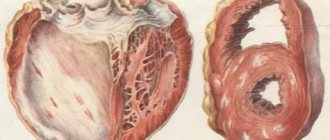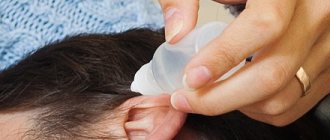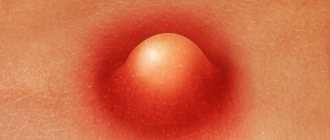Strabismus or, in medical terms, strabismus or tropia is a condition in which there is a deviation of one eye or both eyes alternately when looking at the object of observation. As a result, the three-dimensionality of the image is disrupted, that is, the so-called binocular vision is disrupted, and the perception of the outside world is incomplete; the child cannot correctly assess the distance and location of the objects surrounding him.
Strabismus occurs in approximately 4 percent of children and is not only a cosmetic defect that affects the mental state and socialization of the child, but also a serious functional impairment. All this leads to impaired physical and mental development, which significantly limits the choice of professional activities in the future. 50 percent of patients with strabismus subsequently develop a significant decrease in vision in the squinting eye - amblyopia.
Strabismus is most often detected in children, but can also occur in adulthood for a number of reasons.
In order to understand the causes of strabismus, you need to know what happens normally. When a healthy person looks at an object of observation, the line of gaze goes from the central point of the eye (fovea or fovea) to the point of fixation (our object of observation). Normally, these lines intersect on an object, and the images received by each eye are analyzed by our brain, aligned and combined. As a result, we get a three-dimensional image, we can estimate the distance to the object and its location relative to other objects.
If one eye deviates from the line of sight, we get different images, our part of the brain cannot combine the picture, make it correct, three-dimensional, and either double vision occurs, or the picture from the deviated eye is suppressed, simply not read by the brain, which is more common in children . With constant suppression of the resulting image over time, the visual acuity of this eye decreases, amblyopia
.
To summarize, strabismus is the absence of binocular vision due to the deviation of one or two eyes alternately. The deviation of the eyes can be slight, and can be overcome by the joint work of the brain and eye muscles. This condition is called heterophoria
or simply
phoria
. It can only be detected by looking with one eye, when the other is closed.
If this is a clear deviation, which is revealed even when looking with two eyes, then this condition is called heterotropia
or
tropia
. Depending on where the squinting eye is directed, there are 4 types of ocular deviations. If the eye is deviated upward - hyper, downwards - hypo, towards the nose - eso, towards the temple - exo. And depending on the degree of deviation, we attach the prefix tropia or phoria to the direction.
Causes
Most adults suffer from this condition since childhood. The disease can also be acquired in adulthood. The reason for this:
- diabetes;
- impairment of neuromuscular control due to stroke;
- head injury that damages the area of the brain responsible for controlling movement (nerves and eye muscles);
- pathologies of the thyroid gland (for example, Graves' syndrome);
- formations of any kind in the brain.
With age, muscles lose elasticity and do not function well enough. This process is called decompensation. Therefore, strabismus appears. They are unable to hold the eyeball in the correct position.
Impaired blood circulation impairs microcirculation in muscles and nerves. The cranial and optic nerves are damaged because they do not receive the necessary amount of elements for normal functioning. Hence, double vision and a direct path to the development of strabismus.
Strabismus occurs in people with a history of thyroid disease, even if the hormones in the blood are under control.
Factors for development
The causes are varied and different for congenital and acquired strabismus. Thus, the following factors may be the causes of infantile (congenital) strabismus:
- family nature of strabismus (hereditary factor);
- genetic disorders (strabismus in Down syndrome, Crouzon syndrome);
- teratogenic effect on the fetus of drugs, alcohol and certain medications;
- premature birth and low birth weight of the child;
- diseases of the nervous system (hydrocephalus, cerebral palsy);
- congenital eye defects (cataracts, etc.).
The causes of acquired strabismus may be:
- the presence of ametropia (myopia, farsightedness, astigmatism) of moderate or high degree;
- excessive visual stress;
- psycho-emotional stress;
- infectious diseases (diphtheria, influenza, measles, scarlet fever);
- somatic diseases (juvenile rheumatoid arthritis), including those occurring with high fever;
- other eye diseases (leukoma, cataracts, optic nerve atrophy, macular degeneration, retinal detachment, etc.);
- traumatic brain injuries;
- myasthenia gravis, multiple sclerosis, retinoblastoma;
- fractures of the floor and wall of the orbit;
- neuroinfections (encephalitis, meningitis);
- paralysis of the cranial nerves (abducens, oculomotor, etc.);
Is it possible to cure strabismus?
Yes. It is possible to cure strabismus in adulthood. Treatment options:
- prismatic glasses;
- surgical intervention;
- hardware therapy.
Treatment should begin when a problem is detected to prevent the development of amblyopia and deterioration of visual perception. The type of treatment is selected depending on the type of strabismus.
Sometimes it is enough to activate the lazy eye.
To do this, the healthy one is covered with a bandage so that the one who mows works harder and does not lose visual acuity. If the disease develops against the background of cataracts, a surgical method is used. The doctor determines the cause, eliminates it, and only then the functionality of the extraocular muscles is restored, after which measures are taken to improve the acuity of visual perception.
Development mechanism
There are two forms of strabismus - concomitant and paralytic. In the case of concomitant strabismus, either the left or the right eye squints, while the magnitude of the deviation from the central axis is approximately the same.
This type of strabismus is most often associated with the peculiarities of the eye structure, is inherited and manifests itself mainly in children. Paralytic strabismus occurs due to damage to the extraocular muscles, or as a result of disease of the optic nerve.
In this case, one (healthy) eye squints. When a person examines an object, his diseased eye moves poorly or does not move at all, while the healthy eye has to deviate to a greater angle. Strabismus can be:
- convergent (often combined with farsightedness), when one of the eyes deviates towards the nose;
- divergent (often combined with myopia), when one of the eyes deviates towards the temple;
- vertical when the eye squints up or down.
Most likely, those around you will be the first to notice strabismus, for example, the child’s parents or peers in kindergarten or school. An adult will be hinted that there is something wrong with his eyes; their position constantly or periodically becomes asymmetrical.
At the same time, the patient himself begins to worry about double vision, dizziness and headaches. Instead of a three-dimensional image, he sees a flat one, and notices a decrease in visual acuity in the squinting eye. Strabismus that develops in childhood can affect the formation of the child’s psyche.
Children's perception of the world around them is disrupted, and physical and mental development may slow down. A common complication of strabismus is amblyopia (“lazy eye”) - a sharp drop in vision in the squinting eye as a result of insufficient visual load on the eye muscles.
Exercises
The exercises are useful in treating a form of strabismus where the eyes cannot align for near work or reading. This condition is called convergence insufficiency.
Close work requires a person to focus both eyes inward on close objects such as books, needle and thread, and computer screens. The coordinated movement and internal focusing of the eyes is called convergence. To focus the visual organ close up, it is necessary to perform special gymnastics.
A slight strabismus can be cured using this method. Severe impairment requires the use of other treatment methods.
Rotation
Don't forget to breathe during the exercise. This technique restores blood circulation to tissues.
As you inhale, slowly turn your eyes clockwise, stopping at the top point. Without holding on, exhale while continuing to draw a circle, lowering it down.
Complete the second round without a break.
Using a pencil
Place a pencil at arm's length. Look at him with both eyes. If you can’t do it right away, direct the squinting eye, covering the healthy one, and then open it.
For divergent strabismus, slowly move the pencil towards you.
Drawing in the air
The following exercises help to relax the muscles, restore joint movement of the eyeballs and learn to focus on one point.
Mobility exercises and strengthening of the extraocular muscles give good results. Do each 5 times. Draw figures in the air slowly, do not rush.
Eight
Mentally draw a figure eight in one direction and the other. Draw vertically and horizontally, slowly.
While drawing one half, slowly inhale, and when finishing the number, exhale. Repeat without interruption up to 5-10 times. If it is difficult, do it as many times as possible.
Draw with your finger while following it.
Simple exercises
It is recommended to perform light eye movements before going to bed, after and during work. These exercises are especially useful after sleep. Exercise daily, but do not overwork.
Mark on glass
Find a point on the glass or draw. Look at any distant object that does not move (post, car, tree, bench, etc.). Alternately look at the selected objects, holding your gaze for a short time.
Close your healthy eye and look only sideways. Then open the healthy one and try to focus on objects with both organs of vision.
Symptoms
Source: zrenieglaz.ru
An objective symptom of any type of strabismus is the asymmetrical position of the iris and pupil in relation to the palpebral fissure. With paralytic strabismus, the mobility of the deviated eye towards the paralyzed muscle is limited or absent.
There is diplopia and dizziness, which disappear when one eye is closed, and the inability to correctly assess the location of an object. With paralytic strabismus, the angle of primary deviation is less than the angle of secondary deviation, i.e., when trying to fix a point with a squinting eye, the healthy eye deviates by a much larger angle.
A patient with paralytic strabismus is forced to turn or tilt his head to the side in order to compensate for visual impairment. Forced tilting and turning of the head with paralytic strabismus should be distinguished from that with torticollis and otitis media.
This adaptation mechanism contributes to the passive transfer of the image of an object to the central fovea of the retina, thereby eliminating double vision and providing less than perfect binocular vision.
In case of damage to the oculomotor nerve, there is ptosis of the eyelid, dilation of the pupil, deviation of the eye outward and downward, partial ophthalmoplegia and paralysis of accommodation occur. Unlike paralytic strabismus, with concomitant heterotropia, diplopia is usually absent.
The range of movement of the squinting and fixating eyes is approximately the same and unlimited, the angles of primary and secondary deviation are equal, the functions of the oculomotor muscles are not impaired. When fixing the gaze on an object, one or alternately both eyes deviate in any direction (towards the temple, nose, up, down).
Concomitant strabismus can be horizontal (convergent or divergent), vertical (supervergent or infravergent), torsional (cyclotropia), combined; monolateral or alternating.
Monolateral strabismus leads to the fact that the visual function of the deviated eye is constantly suppressed by the central part of the visual analyzer, which is accompanied by a decrease in visual acuity of this eye and the development of dysbinocular amblyopia of varying degrees. With alternating strabismus, amblyopia, as a rule, does not develop or is only slightly expressed.
Wearing glasses
If the problem is detected early, vision correction with glasses will help. For optical correction, patients are prescribed the use of special glasses and lenses. If an adult has a unilateral disorder, eye occlusion is prescribed for the purpose of training and treating amblyopia.
Prismatic models can eliminate diplopia associated with strabismus in adults.
A prism is a transparent wedge-shaped lens that bends or refracts light rays. When worn by strabismic adults who have mild double vision, prismatic glasses rearrange images so that the eyes see only one image.
Prism Eye glasses usually cannot correct more severe cases of diplopia, where the images are far apart or double vision is caused by weak, tight muscles.
Advantages of prismatic optics:
- wide range of optical power;
- ease;
- flexible film.
The disadvantages of the model include difficulty in maintaining, chromatic aberrations and a decrease in visual acuity by 1–2 lines at high values of the optical power of the prism.
The corrective effect of prismatic lenses is achieved due to the refraction of the line of sight when rays pass through optical glasses of different thicknesses. If the strabismus is converging, the prisms are turned horizontally with the base outward; with diverging strabismus, the lenses are thickened near the bridge of the nose and narrow closer to the temples.
ethnoscience
Treatment of strabismus with folk remedies is effective only at the initial stage of its development. Folk remedies in this case have a special purpose, since strabismus can be cured at home by strengthening the eye muscles.
Hot chocolate
This method of combating strabismus is contraindicated for diabetics and people with allergies to cocoa beans. Directions for use: eat 4 standard pieces of chocolate one hour after breakfast and lunch. The duration of the course is one month.
But when purchasing such chocolate, you must take into account that the content of grated cocoa in it must be at least 60%. Milk, porous and filled chocolate are not suitable. The method is most effective for children 3–4 years old who have been diagnosed with strabismus.
Calamus root is a good remedy for strabismus. Dilute 10 g of calamus root in a glass of boiling water, then strain and take 1/4 glass three times a day 30 minutes before meals. Boil cabbage leaves until completely tender.
Consume 4 times a day with cabbage broth. Rosehip decoction. Pour 100 g of fruit with a liter of boiling water. It is recommended to boil over low heat, then leave for 5 hours and consume a glass before meals. You can add a little honey to the strained broth.
Pine needles will also help cope with the disease. You need to place 100 g of pine needles in half a liter of boiling water and keep it in a water bath for some time, and then infuse it very well. Take 1 tablespoon after meals. The exact timing of the course has not been determined, but long-term use of this healing agent is recommended.
Clover infusion. You will need 1 cup of boiling water and 6 g of chopped clover. Let it brew well. Drink after meals twice a day. Blackcurrant infusion. Take 5 g of currant leaves and brew them in a glass of boiling water. Strain and take instead of tea.
Juice from carrots, beets and cucumbers. Drink half a liter a day. Alcohol infusions also help well in the fight against strabismus. You can prepare an alcohol infusion with Chinese lemongrass. To do this, you will need 100 g of crushed lemongrass fruits and 500 ml of vodka.
Leave for ten days, shaking every day. Use tincture 20 drops, pre-mixed with water, twice a day before meals. Phytodrops (drops made from plants) are also a means of preventing and treating strabismus at home.
Here are just a few of the remedies: pour 10 g of dill powder with a glass of boiling water and let it brew for a while. During the day you need to drop it into your eyes 2-3 times. Mix fresh apple juice, May honey and onion juice in a 3:3:1 ratio. Place the resulting mixture in your eyes before going to bed for 10 days. After a break, the course can be repeated.
Decoctions and herbs
Calamus root strengthens the eye muscles. To prepare this product you will need 10 g of raw materials per glass of boiling water. Drink the infused and strained broth, a quarter glass three times a day, 30 minutes before meals. Cabbage leaves will improve vision.
Wash a few leaves and cook until they begin to soften. Eat this remedy 4 times a day. It is recommended to drink it with cabbage broth.
In the initial stages of strabismus, take a decoction of rose hips. To do this, you will need a liter of boiling water and 100 g of rose hips. Boil the broth over low heat, let it brew for 5 hours. Dissolve a little honey in the strained mixture. Take a glass before each meal.
Pine needles are good for vision. To brew 100 g of pine needles you will need half a liter of boiling water. Keep the composition in a water bath and let it brew well. Take the product strained, 1 tablespoon after each meal. This treatment should be carried out over a long period of time.
Traditional healers recommend a decoction of clover against strabismus. To brew in a glass of boiling water you will need 6 g of chopped clover grass. Let it brew and then drink twice a day. Carrot juice strengthens the eye muscles. Add beet and cucumber juice to it.
Drink half a liter of this drink every day. To reduce strabismus, prepare a decoction of black currants. For a glass of boiling water you will need 5 dried leaves. Take the decoction strained several times a day instead of tea.
Operation
Surgery is the most common way to correct strabismus in adults. Typically, the disease occurs when the muscles surrounding the visual analyzer become too weak or lose their elasticity.
Optometrists can surgically loosen, tighten, or reposition the necessary eye muscles to balance them to work together.
What does surgery provide:
- aligns the eyes;
- reduces or completely eliminates diplopia;
- restores eye function;
- reduces fatigue;
- expands peripheral vision;
- provides many social and professional opportunities.
The operation is performed on an outpatient basis under general or local anesthesia. After the procedure, patients experience minor pain or discomfort; these symptoms are quickly relieved by Panadol and Paracetamol. Sometimes the patient requires stronger drugs - Codeine, Hydroquinone.
People return to normal life within 2–3 days. More than 1 procedure may be required, the number of operations is determined depending on the severity of the disease.
Complications of surgery:
- allergic reaction to an anesthetic substance;
- infection;
- temporary deterioration of visual perception;
- diplopia for 1–2 weeks after the procedure;
- improper eye alignment (surgeon error).
What it is?
Strabismus is a disease in which the visual axis of the eye is disrupted. The gaze cannot be concentrated at one point, so a person perceives the same object differently.
The brain receives the wrong signal and processes it in the same way. To protect itself, the central nervous system excludes the affected eye from its “area of responsibility.” Therefore, it is wrong to consider strabismus solely a defect in appearance. This is a serious disease that needs treatment.
Problems it can lead to:
- Inability to correctly estimate the size and distance to an object.
- Impaired perspective perception.
- Deterioration of coordination. If it develops in a child, it will be difficult for him to maintain balance and he will often fall. Young children with strabismus may refuse to stand on their feet altogether.
- Decreased vision, incorrect processing of information received from the visual analyzer by the brain.
If a person’s strabismus is minor, it is most often discovered by chance. Coping with such a violation is not difficult. With severe strabismus, treatment is not always effective.
Adults rarely visit an ophthalmologist. Even if their vision begins to deteriorate, they attribute this to the natural aging of the body and are in no hurry to solve the problem. This should not be done. It is important to see a doctor on time. The sooner treatment for strabismus is started, the better the prognosis.
Prevention
Strabismus is easier to prevent than to treat, especially in adulthood, when it is acquired. Prevention of strabismus involves regular preventive examinations.
Additional measures:
- do not read while moving;
- create a work and rest schedule;
- boost the immune system and promptly treat infectious diseases;
- control blood pressure;
- undergo preventive examinations with a neurologist and cardiologist;
- eat properly and balanced.
Strabismus can be avoided if a person promptly detects incorrect refraction of light on the retina of the eyes. At this stage, the disturbance is minor and can be quickly corrected with prismatic lenses.
Diagnostics
With severe strabismus, there are no problems with its diagnosis. The doctor must not only establish the presence of a disorder, but also determine the degree of its development. The doctor must be able to recognize pathology when it has just begun to form.
To make a correct diagnosis, research methods such as:
- Assessment of visual acuity.
- Inspection at the synoptophore. The doctor is able to evaluate the ability of the eyes to merge images.
- Computer refractometry. This test allows you to evaluate the refraction of the patient's eye.
- Ophthalmoscopy and biomicroscopy. The doctor examines the patient's fundus and the condition of the retina.
- Tests to determine whether a patient has the ability to have binocular vision.
Patients with strabismus may require consultation with a neurologist. It is indicated for all patients with such forms of heterotropia as: alternating, paralytic, divergent.
Additional diagnostic criteria include:
- Determination of pupil divergence angle.
- Detection of hidden strabismus.
- Determination of other eye disorders.
Patients with strabismus and thyroid dysfunction require consultation with an endocrinologist. To cope with the problem, highly specialized treatment will be required.
Treatment methods
Is it possible to correct incorrect eye position? Therapy for strabismus is selected individually, taking into account the age and health status of the patient, the degree of development of the pathology, and the presence of complications. The following treatment methods for strabismus can be used:
- Optical correction. Special glasses or contact lenses are prescribed and must be worn continuously until vision correction occurs.
- Occlusion of the squinting eye. The patient is prescribed glasses, one lens (of the healthy organ of vision) of which is sealed. This helps to increase the workload and restore the functions of the internal muscles of the squinting eye.
- Hardware stimulation. Used in the presence of amblyopia, it helps to improve visual acuity in both eyes. Laser stimulation, electrooculostimulation, Amblyocor and other hardware procedures may be prescribed.
- Restoration of binocular vision. For this, special computer programs are selected (for example, the Blade treatment program) to help the brain connect 2 images into a single whole.
- Orthoptic treatment : training on a convergence trainer, eye gymnastics, use of prismatic lenses.
- Botulinum injections. Botox is prescribed for excessive activity of the eye muscles in order to stabilize their functions and restore disorders.
- Surgical intervention. If conservative therapy does not improve the patient’s condition, then the problem must be dealt with surgically, aimed at restoring the normal position of the eyeball. The operating technique is selected individually. In one case, the eye muscle may need to be strengthened, and in another, it may need to be weakened. The operation is best done at 3-6 years of age. Surgery eliminates the external defect and helps restore binocular vision.
Elimination of strabismus by surgical method.
Is it possible to cure strabismus in old age? Strabismus can be cured at any age. You can get rid of the problem only with the help of comprehensive treatment. With the right approach, recovery occurs on average in 2-3 years. It is impossible to cure heterotropia with medications. Medicines can be prescribed only to eliminate the main problem and as an auxiliary supplement (Picamilon, Atropine, vitamins).
Forecast
Treatment of strabismus must begin as early as possible so that by the start of school the child is sufficiently rehabilitated in terms of visual functions. In almost all cases, strabismus requires persistent, consistent and long-term complex treatment.
What is the danger?
Late and inadequate correction of strabismus can lead to irreversible vision loss. The most successfully correctable type is concomitant accommodative strabismus; with late-diagnosed paralytic strabismus, the prognosis for restoration of full visual function is unfavorable.
Prevention of strabismus requires regular examinations of children by an ophthalmologist, timely optical correction of ametropia, compliance with visual hygiene requirements, and dosage of visual stress. Early detection and treatment of any eye diseases, infections, and prevention of skull injuries are necessary. During pregnancy, adverse effects on the fetus should be avoided.
Why do newborns cross their eyes?
When a newborn's eyes wander in different directions, it can alarm even an experienced mother. Strabismus in infants can be of two types:
- Functional. This condition is not a pathology. During intrauterine development, the child had no need to focus his gaze, so his eyeball muscles are not trained. The centers of the brain that control eye movement reach a level of sufficient development by 3-4 months. Until this age, the pupils of infants act uncoordinated and can move horizontally, only mastering vertical movement. The skull of newborns has a peculiarity: its right and left halves form an angle, so from the outside it seems that it is squinting. Functional strabismus disappears by the first six months of life.
- Persistent strabismus - strabismus, heterotropia. The visual axes of both eyes are unable to connect to one point, and the eyes always look in different directions. If a baby has this pathology from birth, it is in vain to expect that strabismus will go away by 4-6 months of life. Persistent strabismus occurs in 2% of newborns; it is due to the following reasons:
- oxygen starvation of the fetus during pregnancy and childbirth leads to disruption of the visual centers of the brain;
- infectious diseases of the mother, especially in the first trimester of pregnancy;
- complications after infections suffered by the newborn itself;
- congenital brain diseases (cerebral palsy, Down's disease, etc.);
- severe fear, other mental or physical trauma;
- hereditary factor.
Authoritative pediatrician E. Komarovsky warns: if after 6 months the child’s strabismus does not go away, he must be taken to an ophthalmologist.
Advanced strabismus complicates the process of developing binocular vision; the baby’s brain will form compensatory reflexes, the strengthening of which will complicate treatment. A decrease in visual acuity is inevitable.
Strabismus in children under one year of age can be recognized by the following signs:
- The baby's gaze cannot concentrate on one point.
- No synchronous eye movement.
- In bright light, one eye closes or moves to the side.
- The baby turns his head to see the object with one eye.
- The child bumps into surrounding objects, because... Poorly assesses spatial depth.
Proper nutrition
Almost all the remedies used by people to treat strabismus are aimed at strengthening the eye muscles. Do not underestimate the importance of this condition, since the quality of vision depends on it.
It is important that the chocolate contains at least sixty percent grated cocoa, otherwise there will be no effect. This remedy is absolutely excluded in cases where a patient with strabismus suffers from diabetes or allergies.
One of the most pleasant ways to combat illness is dark chocolate. This delicacy is used in small quantities and will become a favorite medicine for children. It is enough to eat four pieces of dark chocolate every day after your morning meal, so that after a month your eye health will significantly improve.











